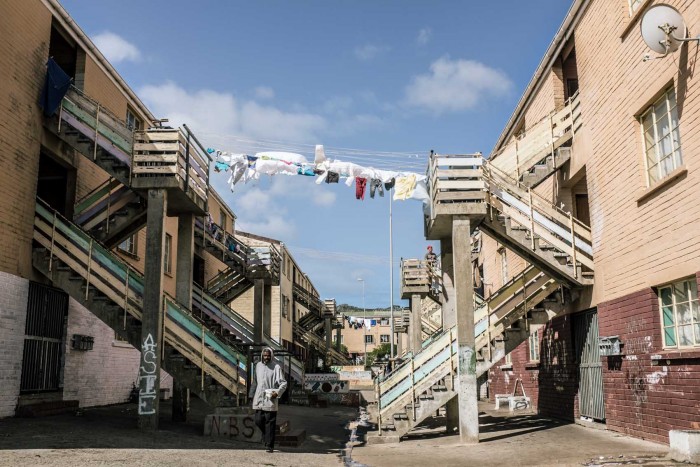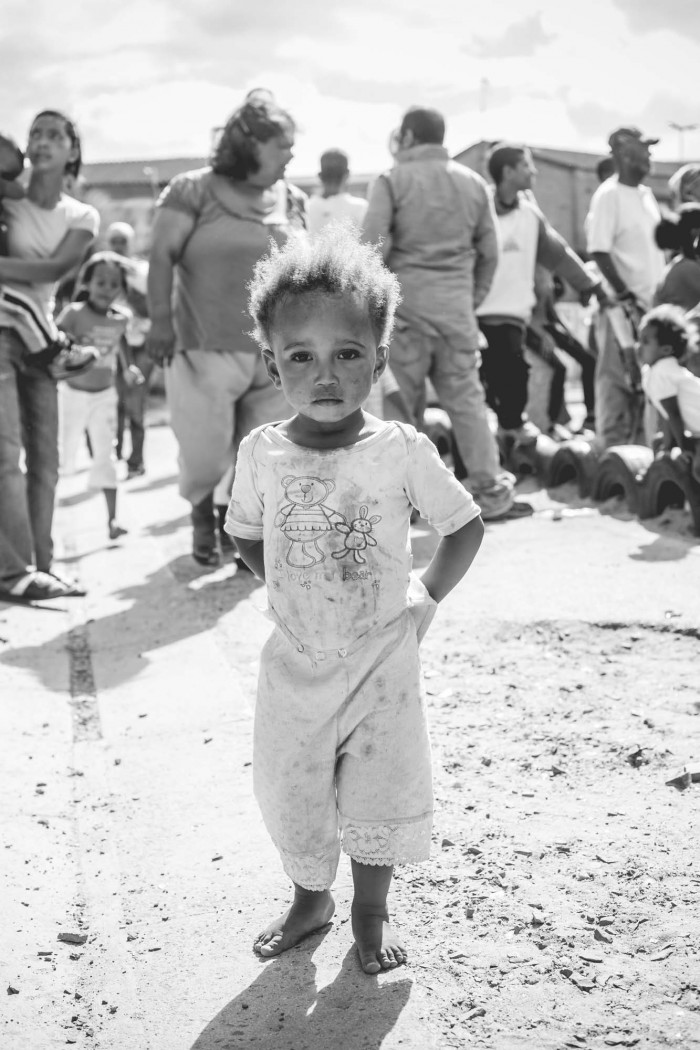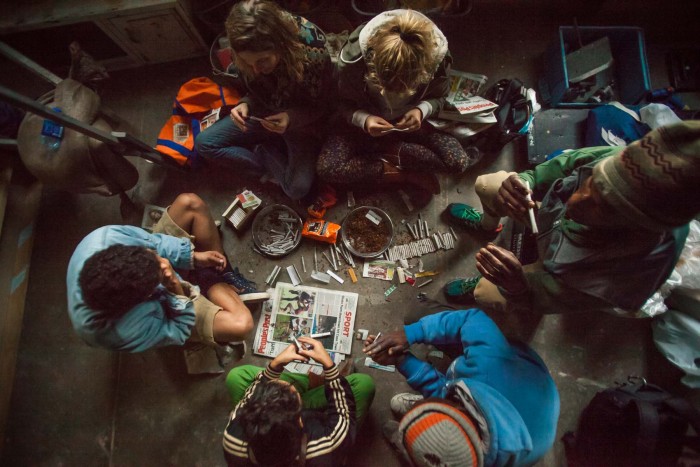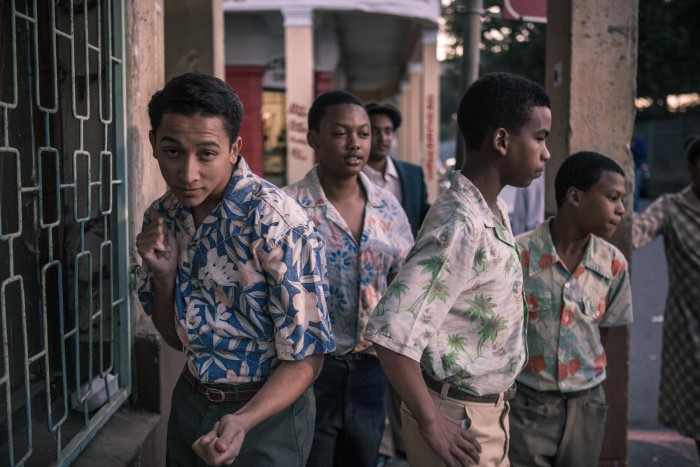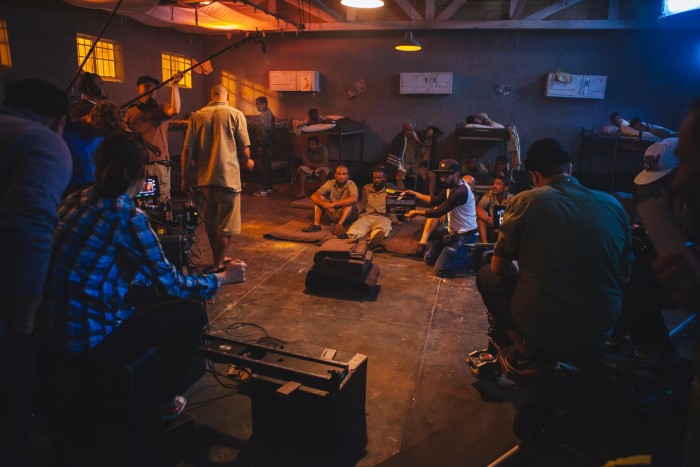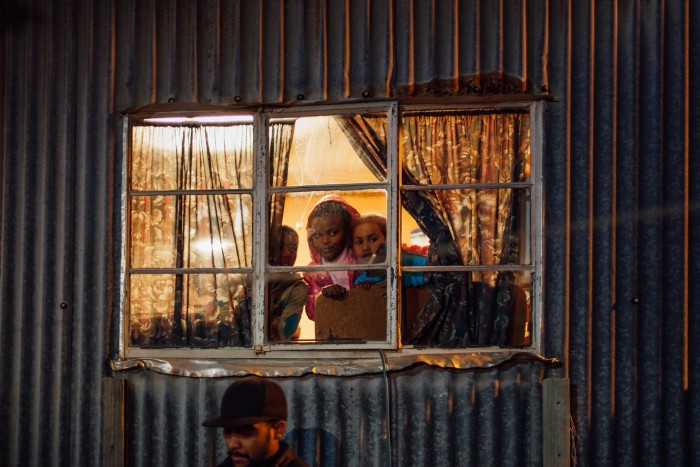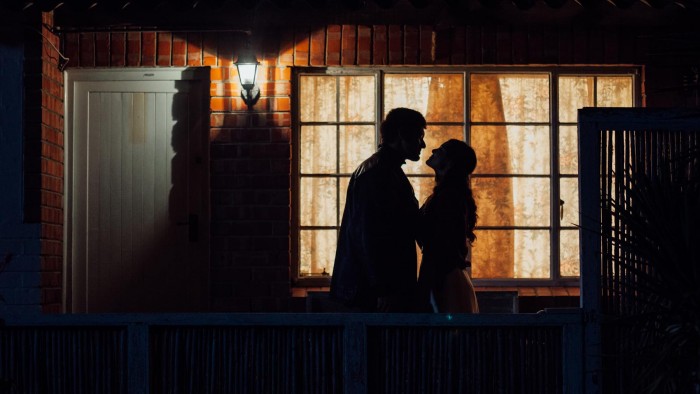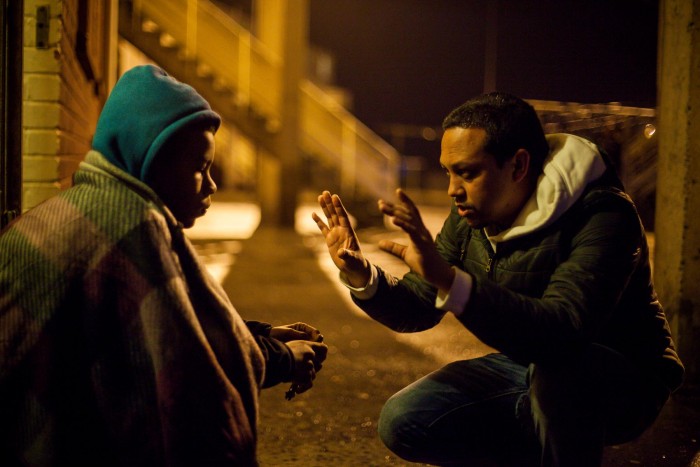South African photographer Lindsey Appolis began his career over six years ago. Abandoning a corporate job to pursue a career in Cape Town’s vibrant art scene, Appolis most recently found himself behind the camera, documenting the creation of one of the country’s most anticipated movies, Noem My Skollie (Call Me Thief). Based on true events, Noem My Skollie follows the journey of its writer John Fredericks, a gangster-turned-filmmaker. For Appolis, a former resident of the city’s Cape Flats, Fredericks’ story and the resulting artworks ring true.
“The reality of the coloured people is gangsterism, violence and poverty,” he explains. “There’s no way to erase this from the stories we tell. When we’ve told all of those stories, we can start telling the story of a new nation, a new people.”
The film’s 70-year-old writer echoes Appolis’ statement: “It was a violent place,” says the Fredericks of his hometown in the Cape Flats. “We had our heroes. Our idols were these old street fighters. A flick knife was the every day.”
Like Fredericks, Appolis found meaning when he embraced his creativity. “The world just made more sense when I picked up a camera,” says Appolis. “I started going into to town, checking out old buildings, shooting people on the streets. My 9-to-5 job almost didn’t exist anymore.”
The Cape Flats, or “the Flats” as it is known to locals, is a low-lying area situated to the southeast of the central business district of Cape Town. Historically, it’s known as Apartheid’s dumping ground because the oppressive government of the time forced people of colour out of more central urban areas that were then designated for white people and into government-built townships in the Flats. Despite the fall of Apartheid in 1994, the majority of the Cape’s coloured and black population still inhabit the informal settlements within the greater Cape Town area. The poverty and crime that had become entrenched in the Flats are still alive today.
In Manenberg, an area of the Cape Flats infamous for gang violence, Appolis explains that he stumbled across the story he was meant to tell.
“There was a moment where, in a crowd of people, there was a three-year-old girl standing in the middle of all of this. She walked towards me, and she stops, staring at me. I took that shot,” he says. “When I looked at her I felt like this was the story the world needed to know. That day I knew I was going to quit my job to tell stories.”
Set in the 1960s, Noem My Skollie follows Fredericks (AB) and his childhood friends as they react to and eventually participate in the violence that surrounds them. Then, as men in the infamous Polsmoor Prison, Fredericks turns to storytelling, bartering his talents to escape further violence.
Appolis exhibited photographs that tell the story behind Noem My Skollie at this year's Together Against Crime Festival at the Artscape, Cape Town from the 28 September to 1 October. Here are some of the pictures he exhibited:
Noem My Skollie (Call me thief) has been chosen as South Africa’s official selection for the 89th Annual Academy Awards (Oscars) in the category for Best Foreign Language Film Award.

